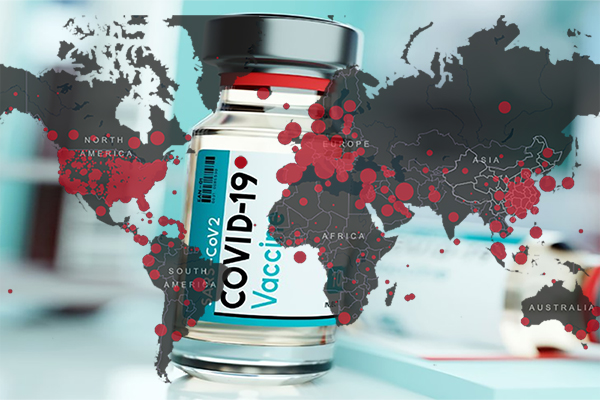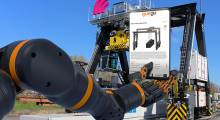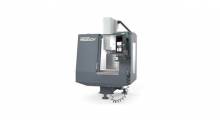COVID-19 Vaccine Distribution: Traceability
While it is a welcomed sign of the beginning of the end of the pandemic, it actually is the beginning of the next set of challenges: How can we get the vaccine distributed around the globe?
Diverse Requirements
We have had to adapt with respect to COVID-19 related supply chain challenges since the pandemic began, such as coping with ‘surprise peak season’ conditions due to the sudden rise in online sales, while having fewer workers available due to COVID-19 protocols and required social distancing measures.
Looking at the distribution of the vaccine from a volume perspective does not seem particularly challenging, especially considering the e-commerce volume the U.S. has already been managing. However, we are facing a whole new set of requirements: transporting as fast as possible at a constant extreme temperature, while the vaccine is being kept safe and secure, to locations across the globe.
What distinguishes this operation is the complete value stream that has to be preserved throughout the supply chain: from the manufacturing process all the way to the point of distribution, and ultimately into the arms of millions of people. This contrasts with most supply chains, which are optimized for just one segment or industry. For example, some providers are experts in the cold chain, others in last-mile delivery, some in fulfillment, and others for track and trace.
For example, Amazon doesn’t make products, they distribute them. Local carriers may be great at distributing efficiently but have limited reach. Manufacturing locations excel at making products but are constrained by the capacity and availability of raw materials and packaging. Typically, hospitals rely on one or two distributors for all of their products. And they cannot administer the vaccine to everyone at once. Therefore, they have to innovate their usual methods for receiving and disbursing vaccines.
As a result, there are new and complex requirements across the whole value chain, which makes the vaccine a massive logistics undertaking.
Distributing the Vaccine During the Pandemic
Usually, developing a supply chain solution involves many on-site visits to study processes and procedures, interview end-users and employees, and test real-world scenarios. Working from home means businesses must work with the limited information that is constantly changing and requirements that are evolving over time. As a result, development on the fly and design on the back end becomes common, following an agile approach. While this works well in other industries, in the pharmaceutical environment, it adds another layer of complexity - the stringent testing requirements that go into validation and required documentation must be considered.
Traceability
Track and trace systems are already an important part of the pharmaceutical supply chain. This involves providing evidence of e.g., where a product comes from, where it was stored, at what temperature, and where it is going. Applying this to the vaccine becomes even more complex. As part of these track and trace procedures, serialization – assigning an individual product number to each saleable unit of a prescription product – plays a crucial role to ensure the safety of pharmaceutical products.
The Drug Supply Chain Security Act (SCSA) will require serialization throughout the entire supply chain for pharmaceuticals beginning in November of 2023. While pharmaceutical companies are all working toward meeting those standards, they are not consistent across the entire supply chain yet. So, even if the vaccine were to be serialized right now, it could not be accurately tracked and traced through the entire chain. Therefore, for the vaccine, track and trace will have to be performed independently by each manufacturer and each part of the supply chain.
Just considering the above-mentioned aspects makes it clear that the vaccine distribution requires a concerted effort between supply chain partners to guarantee seamless operations without damage to the valuable goods. Knowing the requirements and operations of the distributor to develop a solution is crucial and track and trace is a must, but there are more challenges to consider. In the next part of this blog series, we address the cold chain. This provides another set of unique considerations at each step of the supply chain for distributing the vaccine. The cold chain is required to keep the vaccine safe and must consider security to shield the vaccines from Interference during transport.
COVID-19 Vaccine Distribution: Cold Chain and Security
Transporting the vaccine as fast as possible at a constant extreme temperature across the globe to the most remote locations while keeping it safe and secure. More specifically, we investigated the complexities of developing a supply chain solution for the distribution during the pandemic as well as the importance and necessity of traceability, especially in a pharma context.
In this part, we will look at the risks involved in keeping the vaccine effective as well as security considerations to prevent interference such as theft during the distribution.
Temperature and Risk
Safe and effective COVID-19 vaccines require cold storage. While maintaining the cold chain is already a challenge in itself, extremely low-temperature requirements for some of the vaccines (-70°C) make maintaining a constant temperature throughout the supply chain even more difficult.
While pharmaceutical manufacturers have the storage capacity required to maintain the necessary temperatures, it is likely that hospitals, pharmacies, and other health care providers, especially smaller, rural providers, do not. Even those that do may have limited capacity at those temperatures. That is where third-party providers come into play. They offer cold storage solutions as well as smaller, more frequent deliveries to address capacity issues.
Quality control and compliance measures within the warehouse also help to ensure safe and effective vaccines. Those measures include constant temperature monitors during storage, product labeling, data matching, and ensuring proper paperwork accompanies the vaccine through every step of receiving, storing, picking, packing, and shipping. This level of compliance management, with the addition of cold chain requirements, adds a layer of complexity for all distributors - especially those that are not familiar with the pharmaceutical industry.
On a truck, more so than in a warehouse, faulty thermostats or compressors can introduce additional risk, and the trailer or truck itself can experience maintenance issues. Once the vaccine has been thawed, it cannot be re-frozen or stored under frozen conditions. The “shelf-life” clock for the vaccine begins to tick, decreasing the amount of time it will continue to be viable. That’s why implementing a traceability solution is crucial. Taking into consideration remote locations of the US like Hawaii and Guam, distribution speed also plays an important role. For this reason, the military is heavily involved, as they have bases across the world and a strong track record for transporting people and equipment.
Security
Pharmaceutical companies are accustomed to the responsibility that comes with manufacturing and distributing high-value products. Unfortunately, there is also the risk that deliveries can be diverted, especially when such a valuable load is on board. Due to the high value of the vaccines, they will be shipped in smaller quantities in more trailers which helps companies to obtain insurance.
Protection of the vaccine also comes in other forms and will follow the same protocols used currently for other high-value products. Considerations include distribution in unmarked trucks as well as regularly changing routes to avoid security risks, the employment of additional security personnel to accompany shipments as well as GPS monitoring. Making use of a transport management system and a warehouse management system with traceability capabilities helps achieve this.
Bringing It All Together
There are many aspects to the COVID-19 vaccine supply chain that make it a unique challenge such as volume, traceability, speed, temperature control, safety, and security, as well as the global nature of the effort and distribution. A typical supply chain solution would focus on any one of these facets, but the world needs us to tackle this solution altogether and all at once.
From manufacturing to storage to distribution to final delivery: The supply chain can be vulnerable to human error and the unexpected. With a highly valuable pharmaceutical product such as the COVID-19 vaccine, it is even more crucial to engage industry experts and implement the right technology and best practices to reduce risk. This can include solutions to automate processes to streamline operations to rolling out track and trace/serialization solutions allowing better visibility, especially under these circumstances. Software such as warehouse management systems for example offers optimum visibility and flexibility within the warehouse, among many other functions.
Transportation management systems on the other hand provide functionality for operations on the road, such as route planning with track and trace functionality.
We at Körber are proud to be a partner with some of the pharmaceutical and logistic companies working together to safely and quickly bring the COVID-19 vaccine to people across the country and the world.
About the Author
Matthew Deep is Vice President of Professional Services at Körber Supply Chain Software. He oversees all development of Körber’s track and trace products focusing on pharmaceutical manufacturing companies and their distribution. Matt has overseen the technology efforts of many projects, most notably at Johnson & Johnson and GlaxoSmithKline including serialization, clinical trials, new product releases, and WMS operational changes with technology upgrades.
With more than 20 years of experience in WMS systems, Matt also brings extensive experience in the electronics, retail and automotive industries and has implemented solutions in 10 countries. Matt holds a Bachelor of Science degree in Industrial Engineering and an MBA focused on Supply Chain Management from Penn State University.
Related Resource
Körber Supply Chain Cold Trace
In this white paper, we detail how the need for traceability in cold storage is providing a unique opportunity for 3PLs. Download Now!
More Resources from Körber Supply Chain
Article topics
Email Sign Up




















